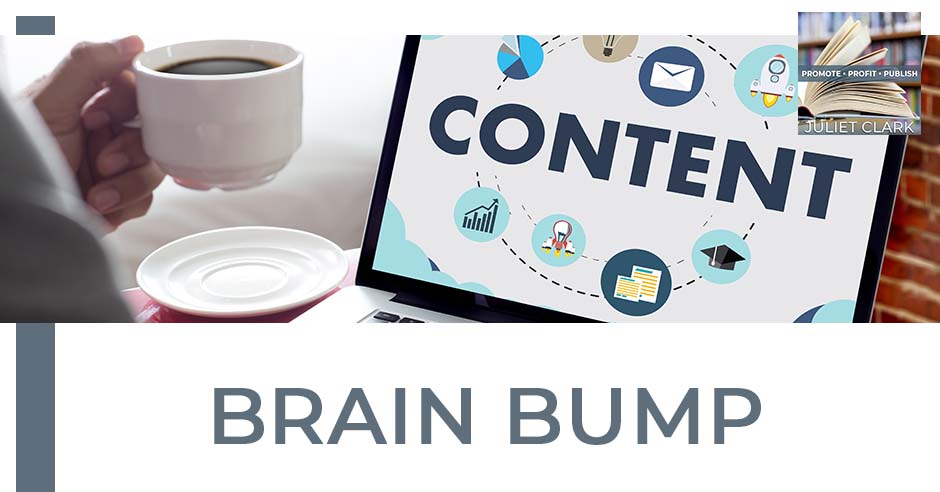
If you’re an author, you want to get people to remember your book so they can recommend it to everyone they know. But some just read books but don’t retain ideas from them. Mark Herschberg creates a solution for this through the Brain Bump App. This app helps people learn and retain content through daily reminders. What are you doing right in your business? Are you leveraging social media for business growth? In this episode, he joins your host Juliet Clark to discuss the importance of repurposing content and increasing engagement with your target audience. Tune in to learn how to create more ROI for your business and overcome the challenges you’re facing today!
—
Watch the episode here
Listen to the podcast here
Brain Bump With Mark Herschberg
The New Thought Leader App Everyone is Buzzing About
Welcome, Mark. I’m always excited to have somebody who’s doing something innovative with books on the show.
Thank you for having me back on the show. I enjoyed our last conversation. I’m excited to talk about this new project.
I am too. Mark is the creator of Brain Bump. It is a new app that he has put a lot of effort into. He saw a need in the marketplace. Tell us a little bit about what you saw and why you built this.
I read a lot of business books. I wrote a business book. I’ve read a lot over the years and one thing I’ve always hated is I read a book, I say, “This is great. There are so many useful ideas,” and then you forget them all two weeks later. That’s not good. As the reader, I want to remember this. I wished there was a way to do so. I take notes on my books and many people do but even when you take notes, you never go back and look at them again. You forget to do that or the notes aren’t there when you need them.
For example, I have networking tips in my book. When do you need those tips? You read them sitting on your couch and then two months later, you’re at a networking event or conference and you say, “What was it that Mark recommended?” You need those tips then and there but they’re not accessible. Once I became an author, I saw the same need from the other side. “I want word-of-mouth marketing.” We all know that is the best type of marketing you can get but if you don’t remember my book and what’s in it, you’re not going to be recommending it to your friends.
How do I get you to remember the book so you can recommend it? These two problems have the same solution. As you and your audience know well, it turns out most people who write business books or self-help books, in general, have other products and services they want to sell. You don’t make money from books. It’s like, “Don’t think I’m going to sell one million books and be rich.” You’re saying, “I’ll get the books out there and then people will come back for other things.”
You have to go through the process of know, like and love. Someone will spend $20 to check out your book. They’re not going to buy a $500 or $2,000 service right off the bat until they get comfortable with you and that takes time. It means they have to get repeated exposure to why you are good. This same tool also solves that problem. I saw this big hole in the market. Interestingly, I didn’t plan to build this. I thought someone must have built this. I’m only going to go license the tool. It didn’t exist. I happened to be a technologist. I’m a CTO. I build tech startups. I filed a patent around it and began building the app.
Don't think of yourself as an author, speaker, or blogger. You are a content creator. You have ideas. You can convey them in different mediums. Share on XI can’t even imagine building an app. I had a lot of respect for them. Tech is like stereo instructions to me. You’re getting out there and getting exposure for your book but why is that any different than social media?
We are inherently different than social media in a few ways. If you think about social media, it’s good for some things but not for what we want to do. First, as the content creator, “I have to post again now because I posted yesterday or the day before or last week,” but no one’s looking at your post from two months ago unless you said something stupid with which you’re getting attacked for. You might have had a great idea that still applies now or applies to years from now. It’s evergreen content but no one’s looking at your post from two months ago. They’re only looking at your post now, so you constantly have to post something new.
It means daily effort or maybe you’re using a posting planner but it’s a lot of repeated effort. It’s also something that has to be timely. If you think of that, if this day, I have a tweet going out at 3:17 PM with some advice. Let’s say it’s advice on how to hire someone. Most people who are following me are not at that moment thinking, “I have to hire someone. I need advice on this.” My advice that I push out falls on deaf ears. It’s not relevant to most of them.
Rather, we want the user to have the whole experience where they say, “I need to hire someone. What do I need to know? I’m about to walk into that conference. I need the networking tips.” You want that whole experience where it is relevant to the user at that moment and your content will resonate so much better.
With my app, once you put the content on there, it’s going to be surfaced every day by someone who finds it relevant at that moment. I don’t have to think, “I got to post every day.” Once I upload the content for my book, I’m done. I don’t have to go back and do more each day. The system automatically delivers it to the people who are looking for that at that moment.
What is the mechanism that says, “I’m looking for that?” Can you share that? Is that a trade secret?
I can. I’m going to talk in high terms and it will get more sophisticated over time as they all do. The algorithm is very simple. The user starts by saying, “I’m interested in this content.” You hear me talk about content and not books because we support books, blogs, podcasts, classes and talks. They’re all the same. It’s about information. They are useful ideas. It’s just is it written or is it audio? You take the key ideas and the user says, “I’ve either read this book or I’ve heard this podcast. I heard about it from a friend and I want to explore.”

Brain Bump: If you’re an author and like to sell a book, you’re aware that customers need to get comfortable with you first, which takes time. It means they have to get repeated exposure to why you are good.
They’re going to add that piece of content to their app. Once they do, when they add the content, they’re getting not the entire book or transcript of the podcast but the key ideas that the content creator put on there. You’re getting all these tips. In this sense, it’s like a flashcard app at this moment that you have all of these cards with the key ideas and the user then can filter either by searching for a key term or we let you tag the tips.
In the tips from my book, I have a chapter on networking. All of those are tagged networking. I have a chapter on leadership. All of those were tagged leadership. The app user can say, “I’m looking in Mark’s book and I want leadership tips.” They can select by that filter or say, “I want leadership tips. I don’t care if it’s from Mark, Carol, Chris or Zach. I’ve got all their content. I want leadership tips from any of them.” Your content will come up along with others and hopefully, your content will be seen as the valuable one that they like. We’re going to let the best content win.
You have to be a content creator. What so many authors miss is they haven’t been building that content. What would you say to them? Share the book? Their book is a whole library of content and a whole bunch of information. Is the book the best thing to use or mix it up?
Don’t think of yourself as an author, a speaker or a blogger. You are a content creator. You have ideas. You can convey them in different mediums. You can conveniently package them together as a book. You can post on social media every day, “Look at this idea. Here’s another good one.” You can go on podcasts and give talks. We’ve mentioned before, “You don’t make money from the books.” A lot of authors do. You have the book but then you draw people further in by having maybe a weekly blog or you sell yourself as a consultant, as a speaker or doing workshops where you’re conveying more information and getting a better profit margin on that but it’s the same idea.
What I have in my book, you can buy for $20 but you can also hire me. I’ll talk to your company and that’s where I can charge more money but I didn’t have to come up with new ideas. I took the existing ideas. I repackaged them from the book to the talk. Think of yourself as a content creator. You might put it in a book or other formats. You’ll talk about when you go on podcasts or the radio. You’ll use it in your talks and workshops. You can put it in this app as well to help deliver the message.
The philosophy in the app someone who says $20 is pricey, maybe they’re going to say, “I’m going to use the app because I can get some of the ideas. I don’t have to buy the book.” Those people were not going to hire me for $500 or $2,000. I’ll lose a couple of book sales but I’m going to gain that word-of-mouth marketing and brand recognition with my target market. That’s a worthwhile trade-off.
The app is about the nurture phase in marketing. You’re right. If somebody is looking for free stuff, they’re not your people. You’re in business to monetize. It’s the bottom line. I love what you said about that because if somebody is in there to only get free tips, that’s fantastic but your goal with the nurture phase is to bring people into those higher ticket items. Let me ask you this. Let’s say that I like what I’m seeing on the app. How do I go from that nurture phase into, “I might want to have a conversation and build a relationship with Mark to work with him?”
Take your content and repurpose it. Get it on social media, or turn that into a blog post. You've done the hard work creating the content, so it's time to reformat and get so much more value out of it. Share on XThe app takes the tips and they are all hyperlinked back to your content. Someone sees a tip and says, “That’s a good idea.” I’ve seen several tips. They can click on the cover image and go right to your website. Maybe they say, “That’s a good idea but I want to learn more.” They’ll click the title that will take them to the blog post or the podcast episode to go deeper into that particular idea. They’re seeing your content every day because one of the things that the app allows for is, “I need those networking tips, so I’m going to go pull them up,” but you can also set it up so that each day you get that push.
What do I mean by that? It’s like, “I got promoted. I’m a new manager. I don’t know much about managing. Every day at 9:00 AM, I want to get a tip pushed to me about being a manager. I chose 9:00 AM because it’s right as I walk into the office.” If this was about having a successful marriage, maybe I’d set it for 6:00 PM right as I come home from work. I’m going to set the time that works for me with the right topic that works for me at the time, so each day, I see that little, “Here’s a management tip. I’ll keep that in mind.” Each day, I get that one.
When I wanted to go further, I clicked through, went to your website to your particular post and follow up there. There are also ways I can follow you on social media because we’ll link to your social media links. We direct people to you. Here’s another difference between social media. Social media wants to keep you on the app. Twitter and Facebook’s algorithms say, “If you’re not continuing to scroll, the content is not good.”
In the usage model for Brain Bump, you should be on it for a couple of seconds each day. You get that tip. You say, “Great idea.” Either you close the app or say, “I want to go to the content creator’s website.” We want you off the app quickly. We don’t want you scrolling and scrolling because it’s this quick hit. It’s that little brain bump to keep it top of mind.
What are the advantages here for the content creators? That’s where people are like, “I have content in so many places. Why this?”
We always teach you to take your content and repurpose it. It’s the act of creating hard content. That takes work. Once you have it, don’t just say, “I put it in my book. I’m done.” Turn it into a talk or put it on social media. You’ve got the content, so we’re only asking you to reformat. When you go through and create this list of tips, it might take a little effort. You have to go through your book and pull it out. It usually takes people a few hours of work but first of all, that list of tips are your social media posts for the next six months. You’ve done the work.
It’s your content, so reuse it and get the most out of it. The key thing and what makes the ROI good is you invest those few hours to create that tip set and put it on the server and then you’re done. With my social media, every day, I have to make sure I am tweeting or scheduling ahead of time. With the app, once I upload the tips from my book and the app, I never have to go back to it again because each day, I know those tips are being delivered to some user who wants that content at that moment. It’s fire and forget. There’s a little work upfront but then you don’t have to go back each day as you do with social media.
For those of you who’ve worked with us and had a bestseller campaign, we have you create those ten key tips that you know, so you’ve got those already in addition to crisp reading and giving you a reader perspective because we always have our authors do it and then come in with a reader’s perspective on it as well. If you’re working with us already, you’ve got twenty tips right there that you can work with. You don’t have to go back through your book right away but you should be as you’re reading your book, getting those tips out of there as well. You can be proactive with that.
An easy thing some people are doing is getting a worker off of Fiverr, Upwork or one of those offshore models. Maybe you have an intern or a friend who you can say, “Can you go through my book and highlight it?” When they get someone off of Fiverr and they say, “Here’s $50 or $80. Read my book. I’m going to send you a Kindle version and highlight what you think is a key idea or interesting.”
You export all those highlights, put them in the spreadsheet and upload them to the server. It’s very easy. For either a couple of hours of the time of yourself or someone on your staff or you pay $50 or $80 to someone overseas, you can generate scores of tips that will make your book look incredibly rich and valuable.
You could do that with the podcast you put there as well. We use Podetize, which comes with a blog or a written article. There’s no reason why you can’t send that article out to someone at Fiverr or Upwork and do the same thing that Mark is talking about.
If you’re not yet using Podetize, which is a great service, what you can do is get a transcription service and upload a whole bunch of audio files. You then get the raw transcript. It’s not nicely formatted yet but still, that’s enough where you get that person somewhere in the world to skim through it and pull out the key ideas. It’s very easy to generate all these ideas.
That’s what we’ve been doing with our show for our magazine articles. We’ll get it transcribed, cut and paste it out of there and segue into whatever we need to do for the article. It does make it super easy to repurpose because all you have to do is cut and paste.
Even if you’re not going to use Brain Bump, do this anyway. Take your content and repurpose it. Get it on social media or turn that podcast into a blog post. You’ve done the hard work creating the content. Reformat and get so much more value out of it.
Reminding people about your content helps you create a lot more ROI. That leads to being recommended to their peers at other companies. Share on XWhen we talk about repurposing content, we always talk about the three main learning modalities. There’s no reason why you can’t present the same content in all three modalities to pick up a bigger audience as well. I have somebody I golf with all the time. He says, “Go watch Phil Mickelson. He’s got this chipping lesson.” I’m like, “I don’t learn from video. I need to be there and do it.” We never know how people learn and it doesn’t hurt to repurpose in ways that everybody can put in their learning modality and pick up what you have. What is the advantage for the app user?
This isn’t you the content creator. This is the end user. The app user can get exposure to your content quickly and easily in a convenient way. Our books have great advice but the advice doesn’t apply when they’re sitting on the couch reading it. It applies in the field at a time and place different than when they access the book. This puts your key ideas of your in their pocket. I say books, podcasts, blogs or talks. They put them in their pocket so they get them when and where they need them.
That makes your content so much more valuable. It’s great to read about an idea three months ago and hope you remember it. It’s even better that the idea is at your fingertips and you can use it when it’s relevant. They’re going to get the benefit of making your content more actionable and associate that with your brand.
Here’s an idea for those of you out there if you’re like me. I’m a big Audible listener. I should own Audible with as many downloads as I have a month. I will listen to a book and if it’s something I find valuable, I’ll go buy the book as a resource. I’m looking at Brain Bump and saying, “Do I need to go buy that hard copy or physical copy of the book if I can go to Brain Bump and get those key points out of it that I need for whatever I want to use it for?” I’ve already purchased the book on Audible. Maybe I don’t need to go purchase it in physical form. I’m a bookseller. I should never give you ideas like that.
It might sound like, “I’m losing a second sale.” To your point, that extra $10 or $20 is not how you’re making your money but what’s happening is you’re saying, “This is so valuable. I want to see the content again.” If you buy the book, they made a few dollars in royalties but the book sits on your shelf. Do you remember to look at it again or look it up? When it’s in the app, it’s so much easier and accessible that you will be looking it up, not once every three months when you happen to be in your office with a book but every week or two.
You’re like, “That tip. Let me look it up again,” or you get it surfaced to you. You get so much more engaged with the content. You build a stronger relationship with the brand, which was the ultimate purpose of the book. It’s not to get the extra $2 in royalties from selling it twice. This is going to increase your engagement with the book, which is our ultimate goal.
I love that Mark keeps pushing that idea home because we’re very transparent with people. Your ROI is not going to come from this book. If you break even, you are a lucky author. With book sales, it almost never happens. It’s what you do with that book. This is a great way to be able to nurture people into those next steps where your ROI does come from. It’s a very good idea.

Brain Bump: You have the book, but then you draw people further in by having a weekly blog or selling yourself as a consultant or speaker.
Let me give you an example. Many of us who write business books or self-help books do talks. We get brought in by companies or conferences. They come in and do a talk. The way you’re evaluated is at the end of the talk, are people applauding or booing? Usually, they’re polite. They’re not going to boo but you’ll get some initial sense. Is it polite applause or is it sincere or do people seem excited about it? That’s great. That’s usually all they do. You might have the smile sheets rate me 1 to 5 but imagine because this is what I get. Two weeks later, the person who brought me in says, “Your talk is so compelling. Everyone is still talking about it two weeks later. I can’t believe that.”
Here’s why they do that. On my final slide where you say, “Thank you,” and you have your contact information, I’ve got my contact information. I also put a special QR code to my content on the app. For each piece of content on the app, when you put content on there, you get a unique link and QR code. I say to the audience, “Thank you. If you have questions, here’s my contact information. Would you like to remember everything we talked about? Pull out your phone and snap that QR code.”
They snap it the first time. They probably don’t have the app installed but that’s okay. That special link takes them to a page where they download for Android or iPhone. I say, “Now that you have installed it, snap at a second time.” That instantly adds to the content. What I did in two snaps, they’ve added all the tips from the talk I gave them.
Every day, they’re going to get a little reminder of one of the things they learned. Two weeks later, the person who hired me said, “Your content resonated well.” Yes, because I’m reminding everyone every day about it. I don’t speak that part. I know it in my mind but they think I’m a genius. These little things help us create a lot more ROI and that leads to being brought in again for different content or being recommended to their peers at other companies.
How hard was it to build this system? I’ve always been curious about an app. You’ll probably say, “I’m an MIT grad or a professor, so it was easy,” but for the layman, how difficult is it?
I’m an MIT grad and I teach there. It was hard. I have done software for 25 years. I’m not an author primarily. This is something I do because I enjoy it. It’s based on a course I teach but I have been building tech startups since the dot-com era. Whenever you do a project like this, it is a lot of work because you have to come up with your designs and then implement them. There are always problems, bugs and challenges.
You then find the design, “It’s not quite right.” For apps especially, no one reads the instructions for the app, so you have to make sure everything is super intuitive and we’ve gone round after round. I showed it to people. “Here’s the app. What do you do? What’s confusing?” I watched them try to do things. “What’s obvious what’s not? How do we tweak that?”

Brain Bump: It’s great to read about an idea three months ago and hope you remember it. It’s even better if the idea is at your fingertips, and you can use it right now when it’s relevant.
Still more bugs and challenges even getting into the app stores. When you have an app, you have to get approved by Apple and by Android. I can tell you, 1 of the 2 is very easy. 1 of the 2 is known to be a nightmare. They held us up for two months. We did everything right. We’re not stealing personal data. We don’t even collect the user data. We’re not doing bad things or stuff to the system. They said, “We don’t think this is interesting enough. We’re not going to approve it.”
I had to go through rounds explaining, “This is unique and different. This doesn’t violate your terms. This does what these other apps you already admitted do but more. Why are you letting them in but not me?” It was a nightmare getting through them. You have so many challenges. It’s like doing a book except you have lots of other people coming in kibitzing and rejecting you for reasons they won’t explain.
I am going to point out something here. I want you who are thinking about building an app to think about it. Like with the book, there’s a reader journey and many authors will start building the book without the buy-in from the reader journey, from the readers and understanding of what those readers want. It’s the same thing with an app. You have to have the buy-in and have a journey prepared that will keep people engaged in using this. The biggest thing I heard when I was trying to build an app was that I was concerned about how the users would see it, especially since I’m a tech idiot. It had to be easy enough for me to use.
When I did my book, I sent out early drafts to people. Some were my target audience. Some were people who were experts like me to make sure, “Did I screw up explaining this or did I forget something?” I discovered subtle but important things. I mentioned my book was based on a class I’ve been teaching for years. I wrote my book. I would sit at my keyboard and think, “I’ll imagine my class is in front of me. What do I tell them?” I’ll start typing out what I would say to them but what would happen is I use words like “students” or “your first job” because I’m teaching students.
The advice about leadership and networking is not just for college students or recent grads but I would slip into using a term like a student or an internship. Some of my readers caught that and said, “This sounds like it’s being written for people in school or just out.” I had to change it and make the verbiage different. The content was good but the verbiage had to change. This goes to the reader experience that you want. How does a reader perceive this? Not only, “Is your content good,” but how do they perceive the content? Is it organized the way they like to perceive it? Is it phrased in phrases they will recognize and relate to? It’s very important to get that feedback.
For an app as well, when I was in advertising, perception was reality. It’s not what you think about your brand. It’s what everyone else thinks about your brand. It’s the same in all of this. The app building and the book, everything reflects that. You have to remember that. One of my big pet peeves is small businesses that don’t do their market research. We had hundreds of thousands of dollars we put into market research a day but I realized the little guy doesn’t have that but there are ways that you can create that reader journey and connect with them. Where do we find this app? Where can we go grab it, take a look at it and think about getting on it?
If you go to BrainBumpApp.com, it will either be on that page or it might redirect you to another page. There you’ll see where you can go find the app. It’s in the Android and Apple Store. We’ll have it linked from there, so you can go to that page and then click right through. If you’re a content creator and want to learn more about having your content on the app, there’ll be a form you can fill out there. You and I can have a conversation and we can talk about getting your content on there.
Thank you so much for being our guest on this episode, Mark.
Thanks for having me on the show.
Important Links
About Mark Herschberg
 From tracking criminals and terrorists on the dark web to creating marketplaces and new authentication systems, Mark has spent his career launching and developing new ventures at startups and Fortune 500s and in academia. He helped to start the Undergraduate Practice Opportunities Program, dubbed MIT’s “career success accelerator,” where he teaches annually. At MIT, he received a B.S. in physics, a B.S. in electrical engineering & computer science, and a M.Eng. in electrical engineering & computer science, focusing on cryptography. At Harvard Business School, Mark helped create a platform used to teach finance at prominent business schools. He also works with many non-profits, including Techie Youth and Plant A Million Corals. He was one of the top-ranked ballroom dancers in the country and now lives in New York City, where he is known for his social gatherings, including his annual Halloween party, as well as his diverse cufflink collection.
From tracking criminals and terrorists on the dark web to creating marketplaces and new authentication systems, Mark has spent his career launching and developing new ventures at startups and Fortune 500s and in academia. He helped to start the Undergraduate Practice Opportunities Program, dubbed MIT’s “career success accelerator,” where he teaches annually. At MIT, he received a B.S. in physics, a B.S. in electrical engineering & computer science, and a M.Eng. in electrical engineering & computer science, focusing on cryptography. At Harvard Business School, Mark helped create a platform used to teach finance at prominent business schools. He also works with many non-profits, including Techie Youth and Plant A Million Corals. He was one of the top-ranked ballroom dancers in the country and now lives in New York City, where he is known for his social gatherings, including his annual Halloween party, as well as his diverse cufflink collection.
Love the show? Subscribe, rate, review, and share!

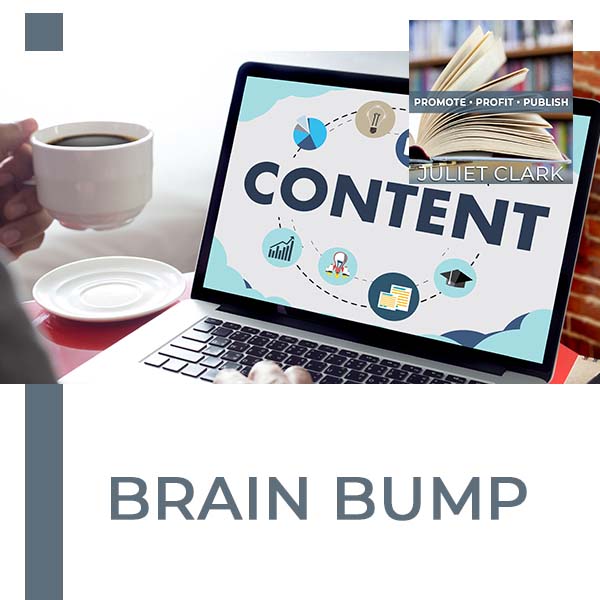



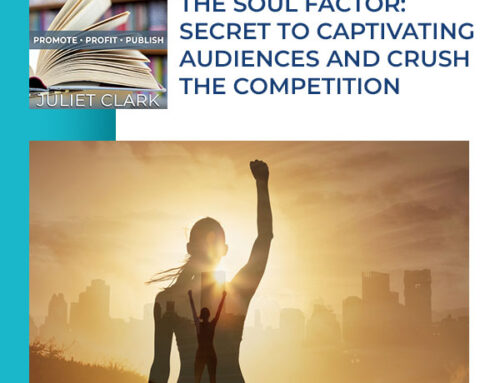
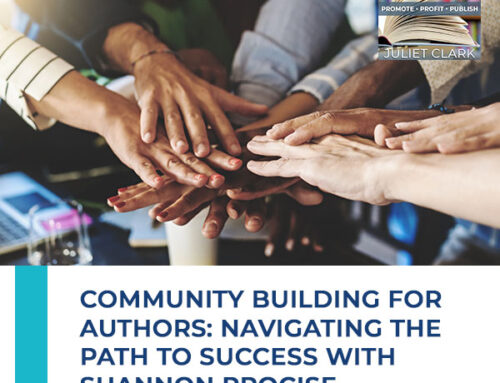
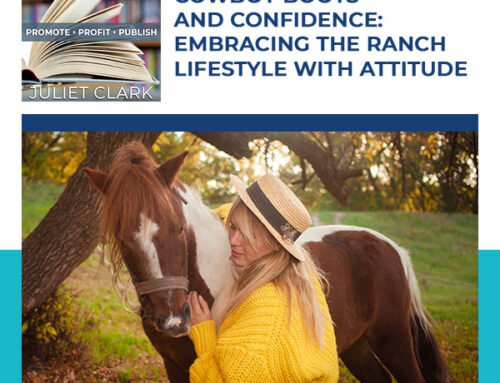


Leave A Comment